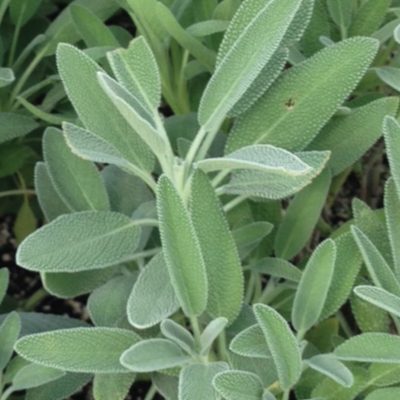
Learning Download: How to Grow Sage
From Seed to Harvest: A beginner’s guide to growing sage
Sage is a shrub-like herb that grows dusty, soft, green leaves. Sage is usually used in dressings, stuffing or to season meats. It also has medicinal properties that allow it to aid in digestion and healing colds. It is a hardy perennial, which means it will come back year after year. however, in warmer climates, sage is usually grown as an annual because it doesn’t grow well in humidity. In addition to its pretty leaves, sage also produces a variety of flowers that are blue, purple, pink or white. Sage plants can reach over 2 feet tall.
To plant:
Sage can be grown from seeds, but it is easier to start the plant from cuttings. Plant the seeds or cuttings indoors up to 10 weeks before the last frost. Plant outdoors up to two weeks before the last frost and leave 30 inches between the seeds or cuttings when planting. Sage does well when planted near cabbage, carrots and rosemary, but do not plant sage near cucumbers.
To grow:
When sage plants are young, water them frequently to prevent them from drying out. Each spring, prune back the woody stems. For the best quality of sage, replace the plants every five years as it begins to become woodier the older the plant gets. To prevent this, you can divide the sage plants and replant every three years. Sage grows well in pots, and it does best in full sun and in a soil with a pH between 6.0 and 6.7. Although sage can withstand winters, mulch the plants before the winter season to add a little bit of insulation.
To harvest:
To harvest individual leaves, pull them off by hand. Entire stems also can be cut, and they should be snipped at their base. Sage can be harvested in its first year but harvest lightly so the plant grows back completely the following year. During its first year, do not harvest all the leaves from the plant at once. Once sage is established, it can be harvested all year long. However, leave two months between the last big harvest and the frost frost. Although sage is best fresh, it can be dried by leaving harvested leaves out in the sun and then removing the leaves from the branches and storing them in an airtight container.
What sage craves:
Twice during its growing season, side dress the plant with compost or a compost tea, especially if the plant is grown in a container. This replaces the nutrients in the soil. Sage doesn’t require any other fertilizer.
Where to buy sage seeds:
you can find sage seeds at Urban Farmer.

